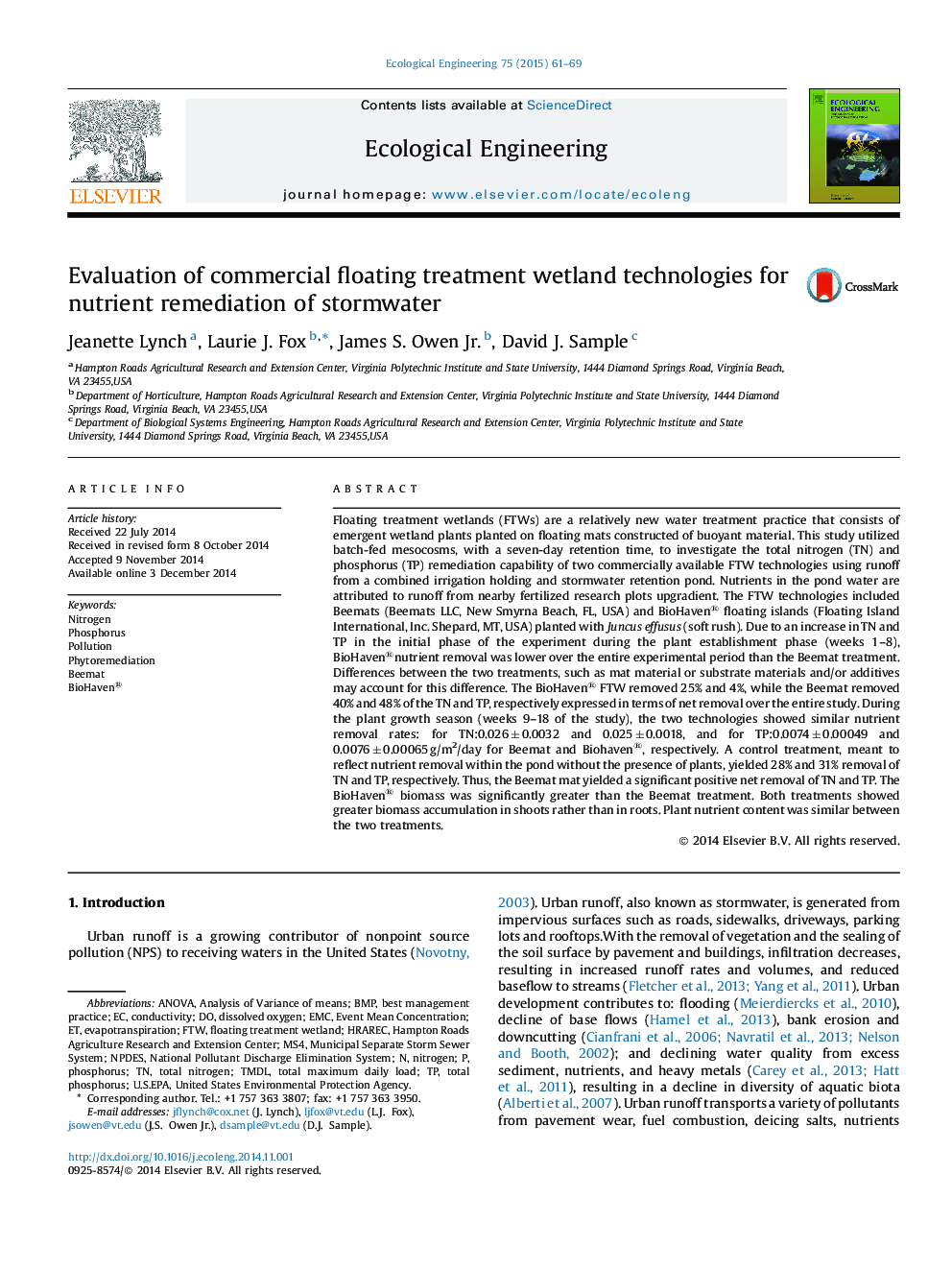| کد مقاله | کد نشریه | سال انتشار | مقاله انگلیسی | نسخه تمام متن |
|---|---|---|---|---|
| 6301656 | 1618024 | 2015 | 9 صفحه PDF | دانلود رایگان |
Floating treatment wetlands (FTWs) are a relatively new water treatment practice that consists of emergent wetland plants planted on floating mats constructed of buoyant material. This study utilized batch-fed mesocosms, with a seven-day retention time, to investigate the total nitrogen (TN) and phosphorus (TP) remediation capability of two commercially available FTW technologies using runoff from a combined irrigation holding and stormwater retention pond. Nutrients in the pond water are attributed to runoff from nearby fertilized research plots upgradient. The FTW technologies included Beemats (Beemats LLC, New Smyrna Beach, FL, USA) and BioHaven® floating islands (Floating Island International, Inc. Shepard, MT, USA) planted with Juncus effusus (soft rush). Due to an increase in TN and TP in the initial phase of the experiment during the plant establishment phase (weeks 1-8), BioHaven®nutrient removal was lower over the entire experimental period than the Beemat treatment. Differences between the two treatments, such as mat material or substrate materials and/or additives may account for this difference. The BioHaven® FTW removed 25% and 4%, while the Beemat removed 40% and 48% of the TN and TP, respectively expressed in terms of net removal over the entire study. During the plant growth season (weeks 9-18 of the study), the two technologies showed similar nutrient removal rates: for TN:0.026 ± 0.0032 and 0.025 ± 0.0018, and for TP:0.0074 ± 0.00049 and 0.0076 ± 0.00065 g/m2/day for Beemat and Biohaven®, respectively. A control treatment, meant to reflect nutrient removal within the pond without the presence of plants, yielded 28% and 31% removal of TN and TP, respectively. Thus, the Beemat mat yielded a significant positive net removal of TN and TP. The BioHaven® biomass was significantly greater than the Beemat treatment. Both treatments showed greater biomass accumulation in shoots rather than in roots. Plant nutrient content was similar between the two treatments.
Journal: Ecological Engineering - Volume 75, February 2015, Pages 61-69
